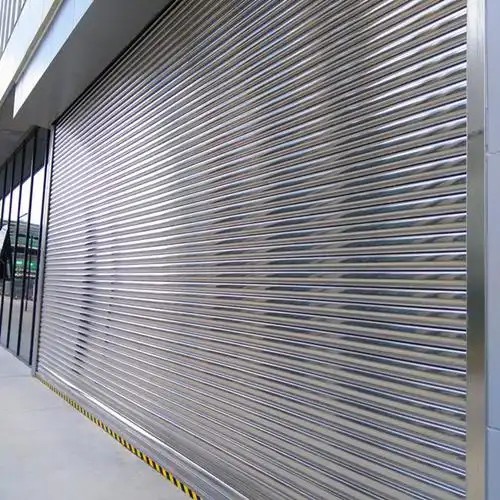0086-13924498389 info@qiruisafe.com
Maintaining roller shutter doors is essential for ensuring smooth operation, longevity, and safety. Here’s a step-by-step maintenance guide:

1. Regular Cleaning
- Exterior & Interior: Remove dust, dirt, and debris using a soft brush or damp cloth.
- Tracks & Guides: Clean grooves where the shutter moves to prevent jamming.
- Avoid Harsh Chemicals: Use mild soap and water to avoid damaging paint or coatings.
2. Lubrication (Key for Smooth Operation)
- Roller Bearings & Hinges: Apply a silicone-based or lithium grease spray.
- Side Guides/Rails: Use a dry lubricant (PTFE spray) to reduce friction.
- Spring Mechanism (if manual): Lightly lubricate the coil spring.
- Frequency: Every 3-6 months, or more often in dusty environments.
3. Check & Tighten Hardware
- Inspect and tighten bolts, screws, brackets, and hinges (loose parts can cause misalignment).
- Look for rust or corrosion—replace damaged parts if needed.
4. Inspect the Door Slats
- Check for dents, cracks, or warping (especially in metal shutters).
- Ensure no loose or broken slats—replace damaged sections promptly.
5. Test Safety & Balance
- Auto-Reverse Feature (if motorized): Test by placing an obstacle in the door’s path—it should reverse immediately.
- Manual Operation (if applicable): The door should lift smoothly without excessive force.
- If the door is unbalanced, adjust the spring tension (may require a professional).
6. Motor & Electrical Components (For Motorized Shutters)
- Check wiring, switches, and remote batteries.
- Listen for unusual noises (grinding, humming) from the motor.
- Ensure safety sensors (photocells) are clean and aligned.
7. Weather Seals & Insulation
- Inspect rubber seals at the bottom and sides—replace if cracked or worn.
- For insulated shutters, check for damage to foam inserts.
8. Professional Servicing
- Schedule an annual inspection by a technician for:
- Spring tension adjustment (critical for counterbalance systems).
- Motor servicing (if automated).
- Structural integrity checks.